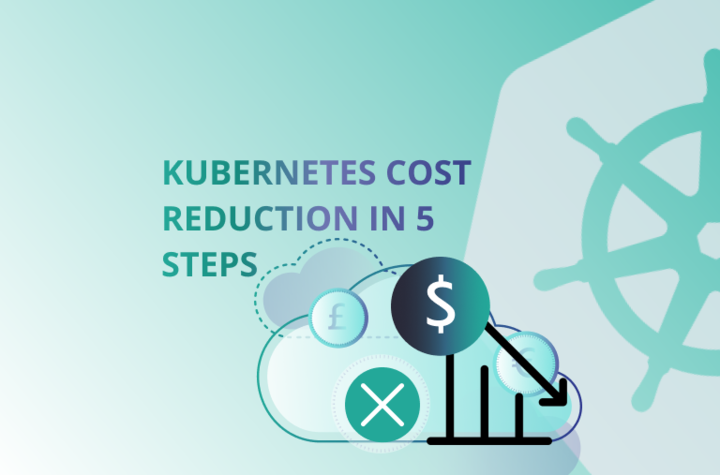As businesses grapple with soaring cloud costs, cost optimization strategies have become top priorities especially those that have heavily adopted Kubernetes for container orchestration. In fact, by analyzing the trends of our customer base, we see that by properly optimizing their environments, on average, they can reduce costs by around 60%.
The Kubernetes platform provides numerous opportunities to help users optimize costs. For example, many organizations implement horizontal pod autoscaling (HPA) and Cluster Autoscaler to allow them to scale up and down their environment based on usage patterns to ensure your applications meet demand without having to provision for peak load spikes.
Although it can be complex to continually right-size your environment and effectively configure autoscaling capabilities, by fine-tuning these parameters, organizations can minimize resource waste and improve cost efficiency. Additionally, as many companies are adopting sustainability goals, and right-sizing and scaling their Kubernetes environment helps minimize their application's carbon footprint.
Optimizing your Kubernetes environment can be an effective way to cut costs, but if not done safely, it can inadvertently lead to performance issues and service disruptions. This not only leads to increased toil for Site Reliability Engineering (SRE) teams but poor application performance directly impacts the customer experience which can erode their trust and negatively affect business outcomes.
Teams are now facing a conundrum of two conflicting forces: keeping costs as low as possible while keeping systems continually resilient and available.
Navigating the Toil Trade-Off
Aggressive cost optimization seems tempting on paper, but in reality, it often comes at the expense of system reliability and operational efficiency. For example, if you optimize to the extreme, and don't leave enough headroom for your environment to maintain resiliency, you can experience a wave of out-of-memory (OOM), CPU Throttling, and evictions that can result in SLA/SLO breaches that erode your error budgets.
At most organizations, SRE teams bear the responsibility of ensuring service stability and availability, and they face an exponential increase in toil when Kubernetes resources are pushed to their limits. Our team did an analysis of Kubernetes Failure Stories and found that a substantial amount (roughly 70%) of outages are a result of scale/sizing-related issues. Not all these cases were caused by optimization efforts, but it stresses the impact and amount of toil caused by improperly sized and scaled environments.
By minimizing resource headroom, organizations can inadvertently expose themselves to underprovisioned services. A major problem stems from teams optimizing resources by looking at current resource allocations and usage patterns but failing to address the constantly evolving services and changing user behaviors that impact the environment.
Additionally, the current toolset for SREs makes it challenging to predict potential capacity-related issues and failures, leading to most problems being detected only after the stability and resilience of the environment are compromised. For example, if a workload is optimized using utilization averages or even the p95 utilization value, this could fail to account for peaks caused by resource-intensive activities, like pod initializations.
As a result, these cost optimization efforts bring short-term, cost-saving success but lead to firefighting scenarios, where SRE teams are burdened with the time-consuming challenges of resolving issues. This jeopardizes the team's ability to meet the service levels of their applications.
They find themselves grappling with consistent, yet unpredictable crises, diverting valuable time and resources away from proactive measures aimed at bolstering long-term stability improvements.
Striking the Optimal Balance
In the pursuit of optimal Kubernetes cloud optimization, organizations must strike a delicate balance to continually ensure cost efficiency and system resilience. However, when dealing with at-scale, highly distributed, and ever-changing environments this problem has become beyond human-scale to solve.
PerfectScale by DoiT offers a comprehensive solution that enables organizations to reduce their cloud budget and preserve their error budget, no matter the size of their environment. By harnessing advanced algorithms and machine learning that account for the unique use cases that can occur in ever-changing, ephemeral Kubernetes environments, PerfectScale ensures that services always receive the precise resources necessary for seamless operation while keeping costs as low as possible.
One of PerfectScale's key advantages lies in its proactive resource allocation. By continually analyzing your environment, the solutions alert you in real-time when resiliency is in jeopardy. This allows you to eliminate under-provisioning issues before they happen, guaranteeing that services have the optimal headroom to function efficiently under constantly changing conditions.
PerfectScale significantly reduces toil for SRE teams, enabling them to focus on strategic initiatives. By preemptively preventing under-provisioning and related incidents, the team can invest time and effort into more proactive measures to optimize service performance, fortify system resilience, and improve business outcomes. This approach reduces SLA/SLO breaches, preserves error budgets, and ultimately delivers a more dependable and stable user experience.
If you would like to learn more about how PerfectScale can help you reducing your Kubernetes cost while prioritizing system resilience and availability, Sign up or Book a demo with the PerfectScale team today!










.png)



